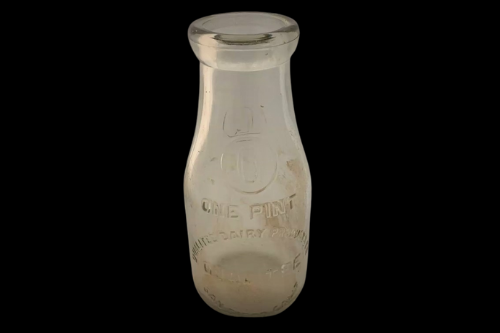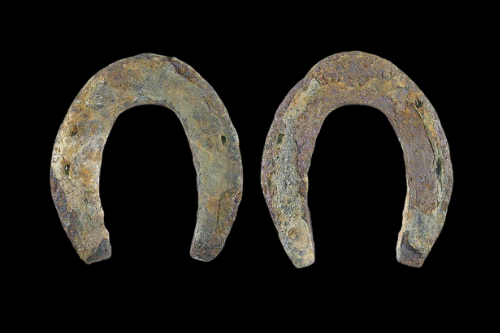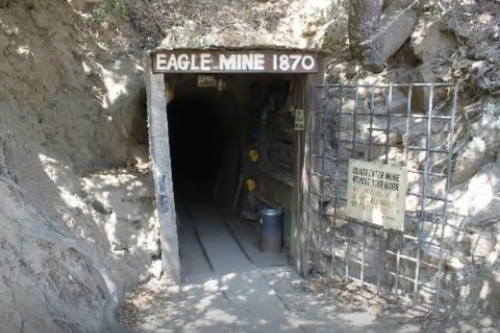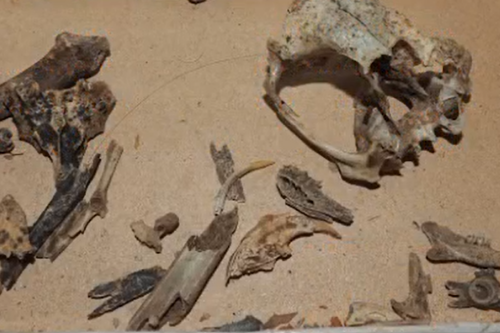
Historic Butchery Techniques
Historical archaeology connects places, things, and issues from the past or present using not only what is found during an excavation, but also written records and oral traditions that then help inform and contextualize cultural materials.
During the spring of 2021, Palomar College students in Professor Betsy Pain’s Anthropology 225 class created videos that can be used as comparative or reference collection guide, which are useful for educational and research purposes. This video series highlights different types of historic artifacts for which students compiled research. If you have any questions about these artifacts or topics, please email collections@sandiegoarchaeology.org.
Historic Butchery Techniques in San Diego
By Blake Georgouses, Palomar College student
Summary compiled by Collections Manager Jessica McPheters
What is Butchery?
 The purpose of this research project is to introduce a general knowledge of historical butchering techniques giving the viewer the ability to identify butchered bones in archaeology. What is butchery? Butchery is the act of cutting and preparing an animal for food consumption.
The purpose of this research project is to introduce a general knowledge of historical butchering techniques giving the viewer the ability to identify butchered bones in archaeology. What is butchery? Butchery is the act of cutting and preparing an animal for food consumption.
Throughout humanity, we have hunted for food, and the techniques and tools used for this purpose have changed over time. In San Diego, the most common animals butchered during historic times were cattle, pigs, chicken, and sheep.
Butchery Techniques
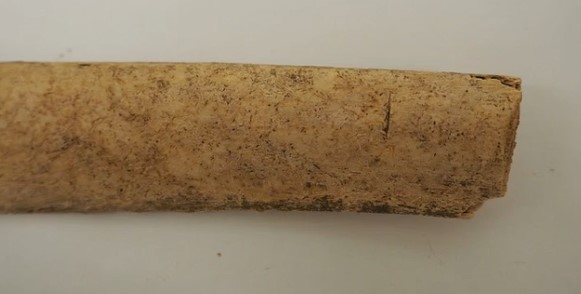
Depending on the cut of meat desired, there would be different bones cut using different techniques. Cut marks are the most commonly found marks left on bones and can indicate that butchery has occurred. Like cut marks, cleave marks are deeper cuts that leave a pattern showing how the force dissipates within the bone. Cleave marks can be left by tools such as cleavers, hatchets, or butchering knives.
Saw marks are very common in historic butchery, specifically in bones that came from restaurants or professional butcher shops. These are identified by their striations caused by the starting and stopping movement of the saw. Bones were sawed by hand until 1923 when the electric saw was invented by Edmond Michel. This sped up the butchery process and resulted in cleaner cuts with smaller striations.
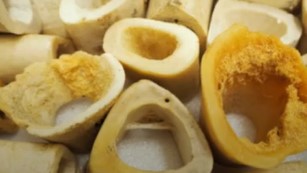 Burn marks can also indicate butchery but identifying these bones requires critical thinking as well. The part of bone burned can indicate whether the bone was cooked or if the bone was blackened, it was likely discarded into a fire for disposal.
Burn marks can also indicate butchery but identifying these bones requires critical thinking as well. The part of bone burned can indicate whether the bone was cooked or if the bone was blackened, it was likely discarded into a fire for disposal.
Percussion blows are also marks commonly seen on butchered bones, and they can indicate things like the breaking of a bone or perhaps the extraction of bone marrow.
To age bones, the most common practice is by using the bones context. If it is found with other artifacts that have provenience and associated dates, you can infer a timeline for when the bone was butchered. Because the bone is organic material, it could also be dated using Carbon dating techniques, but this is often quite expensive and generally not done on historic bone.
Butchery in San Diego
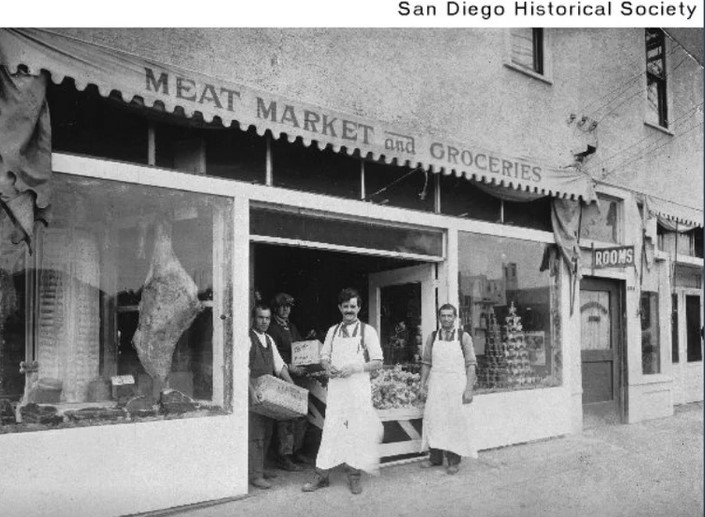 In San Diego, historical butchery began with the arrival of the Spanish in 1769 when they introduced cattle, pigs, sheep, and chicken to the region. A study conducted by Susan Arter and Aharon Sasson from the San Diego Natural History Museum explored and studied avian remains from the San Diego Presidio. You can learn more about their work in this presentation. Butchery was important for historic San Diego’s economy with the distribution of cut meats to butchers and restaurants. The introduction of these types of animals was integral to the success of the ranching business in the area.
In San Diego, historical butchery began with the arrival of the Spanish in 1769 when they introduced cattle, pigs, sheep, and chicken to the region. A study conducted by Susan Arter and Aharon Sasson from the San Diego Natural History Museum explored and studied avian remains from the San Diego Presidio. You can learn more about their work in this presentation. Butchery was important for historic San Diego’s economy with the distribution of cut meats to butchers and restaurants. The introduction of these types of animals was integral to the success of the ranching business in the area.
Bones tell archaeologists much about the people who ate them. Economic status can be indicated by the cut and quantity of meat (bones) found at a site. The style of butchery (or type of cuts) also points to the tools used and class of those who were eating the bones. The bones found at archaeological sites can also tell a story about the culture who was consuming them by giving context and information about their diet at a specific time in history.
Historic Butchery Techniques in San Diego
Enjoy this informative video to learn more about historic butchery techniques. Come back next month to learn about historic mining helmets!


